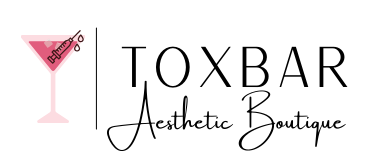Botox Xeomin and Dysport OH MY!
Stereotypes surrounding Botox and it’s relatives can range from humorous to frightening… Our goal at ToxBar is to be as transparent as possible when explaining our business and continually celebrate the beauty of all of our customers! In order to debunk myths and answer questions in a relatable way, we insist on building relationships with our customers and always being available to answer questions; no question too small or insignificant! While we seek to educate our clients about the truths and possibilities, we also seek to demystify all age-defying cosmetic procedures!
One of the myths surrounding our field of work is that only the ‘Real Housewives of the Tri-State’ are participating; that using injectable neurotoxins is a rare occurrence, saved for only the most sleek elite we’ve ever dreamed about. It’s just simply not true! According to an article published by www.today.com, in 2012 a record 6.1 million Americans received Botox injections! Many are using Botox and other injectables as a means to counteract the signs of aging, but also for other medical reasons; primarily migraine prevention and as a block for excessive sweating.
So, let’s get our cosmetic textbooks out for a bit and dive a little deeper into Botox… The more you learn, the more you know, the more you understand, and ultimately, we believe the more false myths and stereotypes can be melted away.
Botulinum toxin type A is an injectable neurotoxin; we know it better from brand names such as Botox, Dysport, and Xeomin. Botox is the medicinal ‘label’ name for 1 of the 4 botulinum toxin preparations currently approved by the US Food and Drug Administration (FDA.) Add these to your book of tongue twisters: There are currently 4 botulinum toxin preparations approved by the US Food and Drug Administration (FDA): onabotulinumtoxin, abobotulinumtoxin, incobotulinumtoxin and rimabotulinumtoxin
So, if Botox, Dysport, and Xeomin all contain the same active ingredient, Botulinum toxin type A, how are they different? According to the American Board of Cosmetic Surgery, “The main distinction lies in their formulation, which influences the dosage used, how much the product spreads, and how quickly a patient might see the results. For example, Botox Cosmetic is formulated with an accompanying protein. Dysport contains a smaller version of a similar protein, while Xeomin doesn’t contain an accompanying protein at all.” Consulting with an experienced medical professional, such as Bubbles and Botox, is the best way to determine the best injectable for you. Your unique anatomy as well as your short term and long term goals will play a role in which injectable your professional will recommend.
Botox, Dysport and Xeomin are most effective around the eye area and on the forehead, but also are used on the lower portion of your face. This treatment is an ideal option for many patients; those looking to avoid the downtime associated with cosmetic surgery, those who want to maintain a rejuvenated look, and those who want to prevent the need for more in-depth anti-ageing solutions down the road.
Working by blocking the nerve impulses that cause muscles to contract, injectable neurotoxins minimize the appearance of dynamic wrinkles, parallel lines on your forehead, the ‘11’ lines in between the brow, and crow’s feet. WIthout muscles contracting beneath the skin, the wrinkles are minimized, and in some cases, completely eliminated. While not all wrinkles and areas of the face are able to be targeted by Botox, Dysport, and Xeomin, the majority problems patients are looking to alleviate can be improved with the use of injectable neurotoxins.
Other FAQ’s about injectable neurotoxins can be found at our website, www.bubblesbotox.com. Also, you will find our contact information and we encourage all who have lingering questions, concerns, or hesitations to reach out; we’re here to help you feel at ease, we’re here to help eliminate false myths, we’re here to help you feel and look your best!

